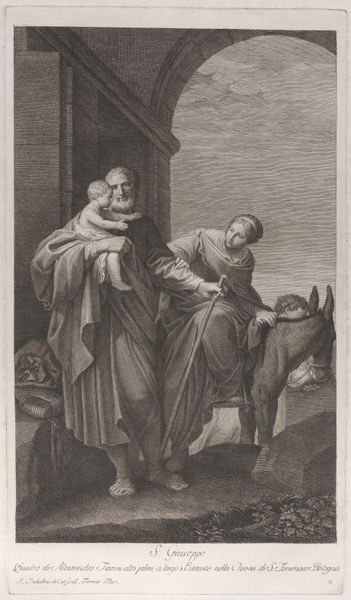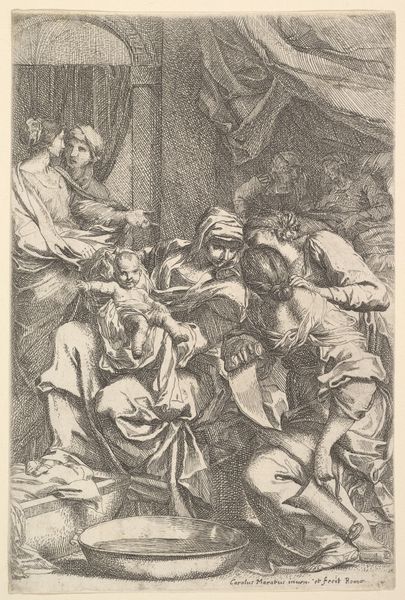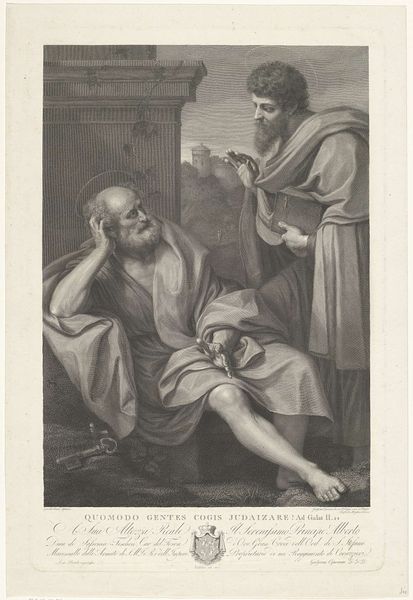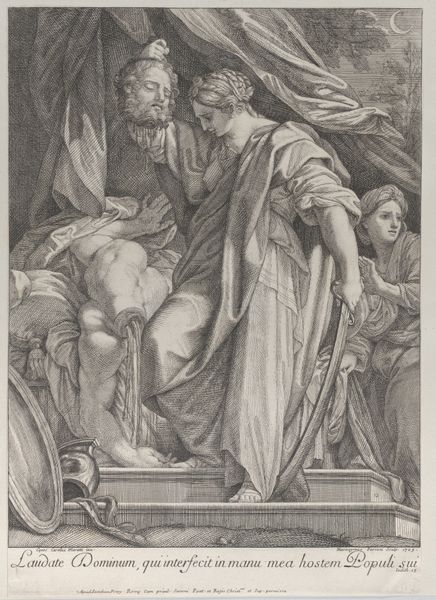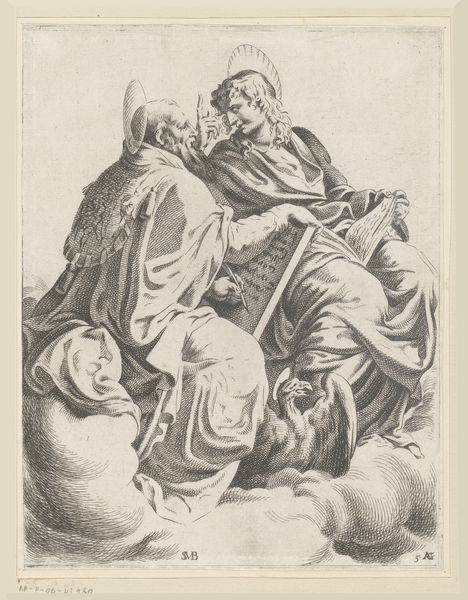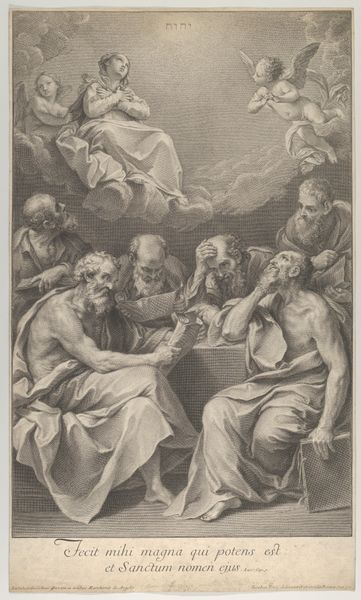
drawing, pencil, chalk, charcoal
#
portrait
#
drawing
#
charcoal drawing
#
figuration
#
pencil drawing
#
pencil
#
chalk
#
15_18th-century
#
14_17th-century
#
portrait drawing
#
charcoal
#
history-painting
#
academic-art
Copyright: Public Domain
Curator: I find this rendering quite beautiful. A drawing by Peter Paul Rubens, “The Saints Peter and Paul,” dating back to 1609, rendered in charcoal, chalk, and pencil. Currently, it resides at the Städel Museum. What strikes you about it? Editor: The overall impression is contemplative, even somber. There's a striking contrast between Peter’s weary, slumped posture and Paul's more upright, almost urgent stance. One feels world-worn, the other filled with conviction. Curator: And I think Rubens’ choice of materials is significant here. Using chalk and charcoal allowed him to achieve these dynamic tonal gradations that convey a palpable sense of the figures’ weight and texture. Notice the materiality of their robes, the coarseness of the stone, even the vellum of Paul’s book; this suggests not only Rubens’ mastery of his craft but also his engagement with materiality of the everyday world and its impact on representation. Editor: Absolutely. Considering the social context, we can appreciate how this imagery contributed to shaping the image of the Church. This image would have played a role in the Counter-Reformation’s attempt to bolster papal authority and legitimize Catholic tradition in a turbulent epoch of widespread religious reform. The deliberate presentation and framing, therefore, carried considerable socio-political meaning for the public of that era. Curator: Yes, it’s also a striking commentary on the labor invested in drawing, and ultimately, in Rubens’ workshop more broadly. Here the preparatory work, often unseen by the public, becomes art in itself. We become witnesses to the artistic processes. The use of such raw materials makes the art appear like labor itself. Editor: Agreed. Furthermore, the presence of specific settings— the architecture, for example—provides insight into Rubens’ artistic license and his manipulation of visual signifiers to create an impression of classical authority for a religious message. Curator: Examining Rubens’ materials reminds us of his labor but also points us towards broader themes of craft within artistic creation. Editor: It’s quite insightful, yes. Rubens managed to weave socio-political messaging through skilled representation. Food for thought, indeed!
Comments
No comments
Be the first to comment and join the conversation on the ultimate creative platform.
